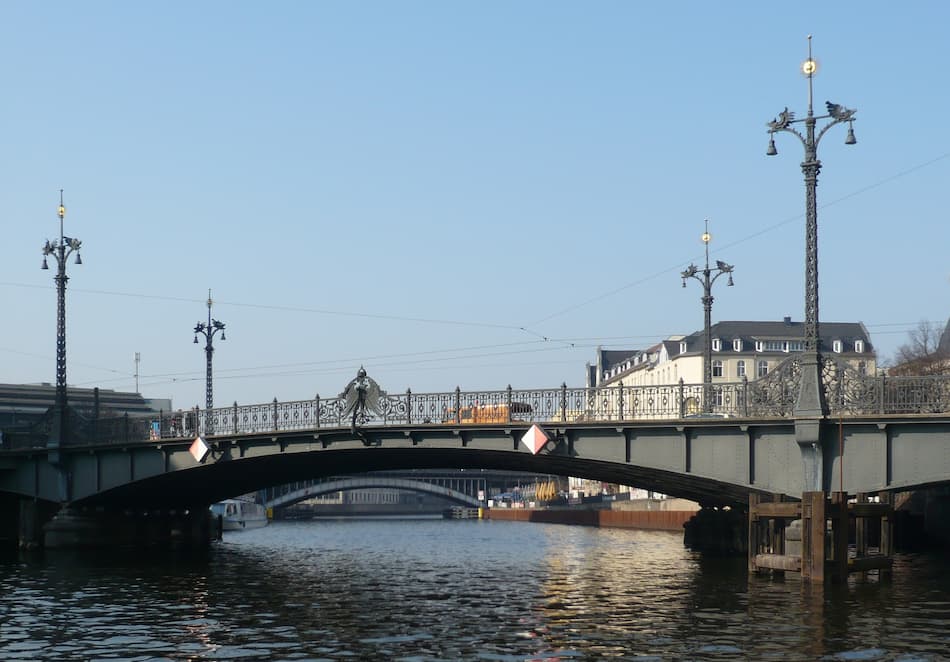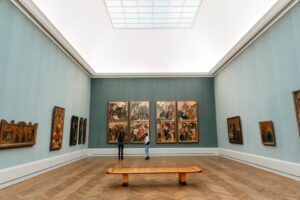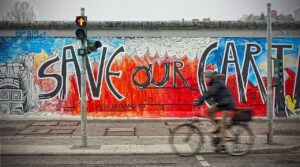When you travel to Berlin, or anywhere really, you’ll probably spend most of your time visiting museums, attending shows or eating at well known restaurants. It’s unlikely you’ll focus much, if any, of your attention on the infrastructure of the city, those essential nuts and bolts that hold the town together and keep it running. You can get away with ignoring that sort of thing is many cities, but in Berlin that would be a mistake, for so history-soaked is Berlin that even its bridges tell interesting stories.
Weidendamm Bridge: A Historical Gem
Nestled in the heart of Berlin, the Weidendamm Bridge (Weidendammer Brücke, in German) is not just a functional crossing over the River Spree but a prism through which you can understand Berlin’s triumphs and its tragedies. The bridge we see today was constructed between 1895 and 1896, and was designed by engineer Karl Bernhard and architect Otto Stahn.
How to Visit the Weidendamm Bridge: Practical Tips
The best way to get to the bridge is by using the Friedrickstrasse train station and walking a few minutes north. When you arrive, note the iron construction, which was quite advanced at the time, signifying Berlin’s 19th century industrial prowess. We tend not to pay much attention to this sort of detail in our modern world, but in the late 19th century, for a relative new comer to the world stage like Berlin, a bridge like this screamed to one and all, «We have arrived!» It was a powerful and elegant statement of technology and progress and part of Kaiser Wilhelm II’s plan to turn once provincial Berlin into a world class city of legendary beauty and sophistication.
Architectural Elegance: The Design of the Weidendamm Bridge
The bridge’s design features ornate ironwork and elegant lines, blending functionality with a touch of artistic flair. In the middle of the structure, you can find two magnificent Prussian eagles, symbols of the power of the Prussian state whose capital Berlin once was, still perched over the river and facing in towards those walking across the river.

The Historical Significance of the Prussian Eagles
This is one of the reasons I love this bridge so much. These eagles capture the essence of Berlin’s contrary nature, its sense that «defying the expected» is part of its DNA. The Weidendamm Bridge found itself, after Hitler’s disastrous war, located in the heart of the Communist East German state, the DDR. You’d think they would have torn down this apparently outdated decorative element in the frenzy of the 1950s and 1960s ideological rebuilding of the city, but no. The old eagles remained in place, forlorn reminders of a troubled Imperial legacy.
The Prussian Icarus: A Song and Its Impact
In fact, one of these old Prussian eagles changed the life of the Wolf Biermann, one of the DDR’s most famous musical performers of the 1960s and 1970s. In 1976, Alan Ginzburg visited Biermann in Berlin and during their walk they stopped for a photograph on the Weidendamm Bridge, with each man posing in front of one of the eagles. They agreed to write a song about it afterwards, which Biermann subsequently performed in a concert that he was surprisingly allowed to give in West Germany.
The words of the song were of course metaphorical, and while nominally involved the old Prussian eagle, called in his work «The Prussian Icarus,» were really a protest poem put to music, in which Biermann waxed eloquent about the nature of freedom in communist Berlin.
The DDR government took a dim view of the whole thing, of course, and refused to let the artist back into his own country, effectively making Biermann into a exile in the west. In a poetic manner of speaking, the bridge and its eagles were Biermann’s unintended ticket to the West, whether he wanted it or not.
The Weidendamm Bridge in the Second World War
Strangely enough, the bridge played host to a different sort of run for freedom, with this version taking placed decades earlier, in the closed hours of the Second World War. After Hitler committed suicide, the route north, across the Weidendamm Bridge and out of the city, was the only even partly viable escape route for the Fuhrer’s erstwhile comrades escaping the bunker. Those who managed to get out, including Hitler’s secretaries and driver, did so by scurrying across the bridge while combat raged all around. A short while later, the bridge played host to one of the last tank fights in the battle of Berlin. A German Tiger tank spearheaded an assault across the span of the bridge and was destroyed while still only partly across, taking out a good few German soldiers who were following along behind it. Shortly after this, the last escape route out of the city was sealed and Hitler’s capital lay completely under the control of Stalin’s armies.
The Weidendamm Bridge: A Historical Treasure
So the Weidendamm Bridge has seen a lot. From Imperial era status symbol and source of pride, to a Second World War battlefield, to inspiring protest art against the Communist state, there a story to cater for every historical interest here. So don’t miss it and while you’re in the area, you can catch a boat for tour of the Spree or enjoy one of the many local bars and restaurants the line the nearby streets.
Historical Facts
- Original Construction: The first bridge at this location was a wooden drawbridge built in 1685 during the reign of Elector Frederick William I of Hohenzollern.
- Cast Iron Replacement: In 1824, the wooden bridge was replaced with a cast iron construction, one of the first of its kind in Central Europe.
- Current Structure: The current bridge, designed by Otto Stahn and Karl Bernhard, was built between 1895 and 1896. It is notable for its ornate wrought iron railings, lanterns, and Imperial eagles.
- Battle of Berlin: During the Battle of Berlin in 1945, the Weidendamm Bridge was one of the few Spree crossings that remained intact. It played a crucial role in the escape of German soldiers and civilians.
- Love Locks: Similar to other famous bridges, lovers often attach padlocks engraved with their names to the wrought-iron railings.
Other Facts
- Location: The bridge is located in the central Mitte district of Berlin, where Friedrichstraße crosses the Spree River.
- Length and Width: The bridge is 73 meters long and 22.5 meters wide, with the longest span being 38.5 meters.
- Cultural Significance: The bridge has been featured in literature and music, including a song by the famous East German singer Wolf Biermann.





